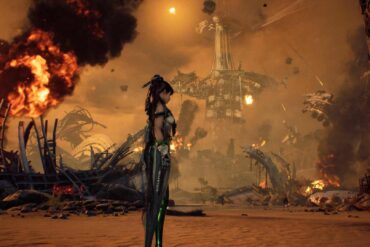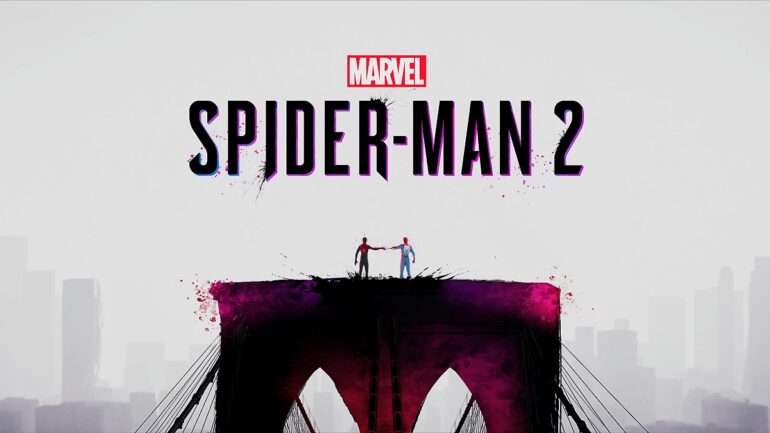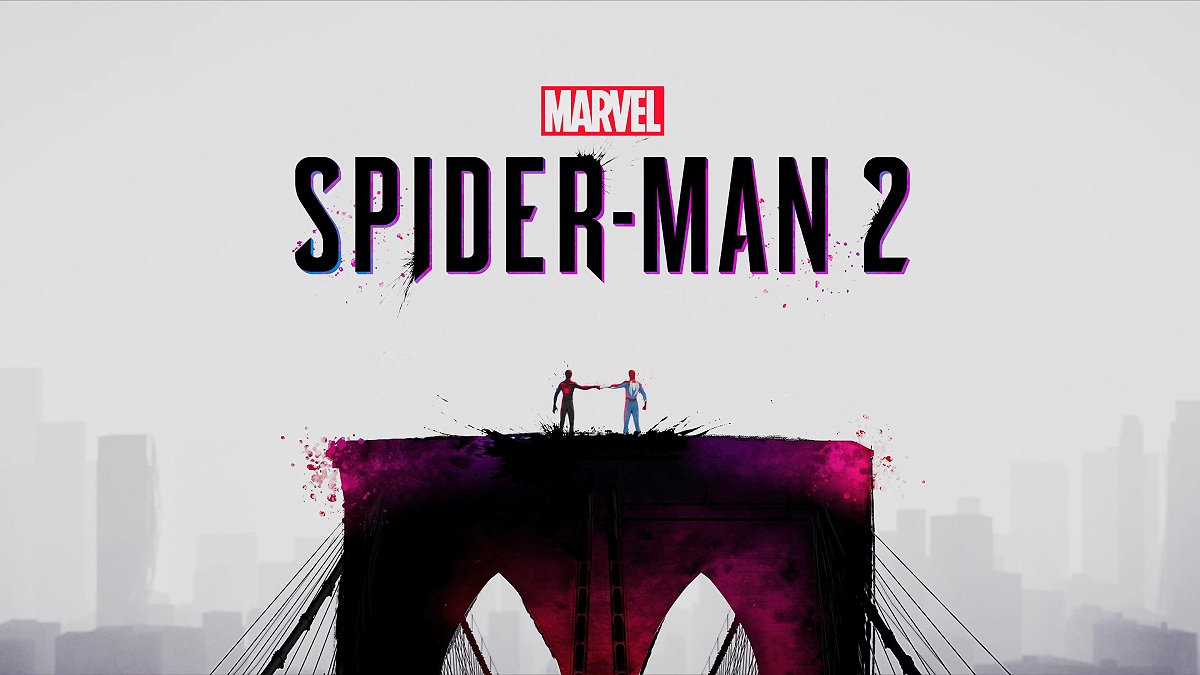Typically, when reviewing a game, I’d waffle through an introduction, offering relatable insights into my relationship with a game or series. However, instead, I want to immediately assuage any fears that Marvel’s Spider-Man 2 follows the perception of recent triple-A sequels being merely nothing more than overpriced DLC. This is unequivocally and demonstrably untrue.
Rather, Marvel’s Spider-Man 2 is a near-flawless masterpiece, one that builds upon the successes of its predecessors to create a truly gargantuan experience that goes above and beyond to please its fans. There are many exceptionally remarkable aspects of Marvel’s Spider-Man 2, all of which I’ll discuss (spoiler-free) across the course of this review. However, if you were to take just one thing away from this review, it should be that Marvel’s Spider-Man 2 is by far one of the greatest games ever made and one that I sincerely hope will be celebrated for many, many years.
“Marvel’s Spider-Man 2’s greatest accomplishment is making me care about characters that we’ve seen on screen and in comic books for over 80 years.”
Marvel’s Spider-Man 2’s greatest achievement is its narrative, not simply for its explosive set-pieces and superhero indulgences, which are, admittedly, genuinely exhilarating, but because of its refreshing willingness to delve deeper into the emotional, cultural, and ideological sides of the titular Spider-Men. The dedication that Marvel’s Spider-Man 2 gives to the emotional aspects of its 17-hour-long story is staggering, the masterful writing perfectly weaving tales of loss, grief, purpose, cultural identity, love, and so much more in between the crowd-pleasing moments of bombastic action.
Of course, superhero media, especially recently, frequently deals with these themes, condensing the emotional toll and trauma one may experience being a superhero into their dense runtimes to appease those looking for depth. However, Marvel’s Spider-Man 2, largely owing to its longer runtime, is afforded these wonderful moments of intense emotional stakes. It takes its time fleshing out each character, a considerable effort considering its dual protagonists have vastly different stories that need to seamlessly weave together while also giving players what they want: the superhero fantasy.
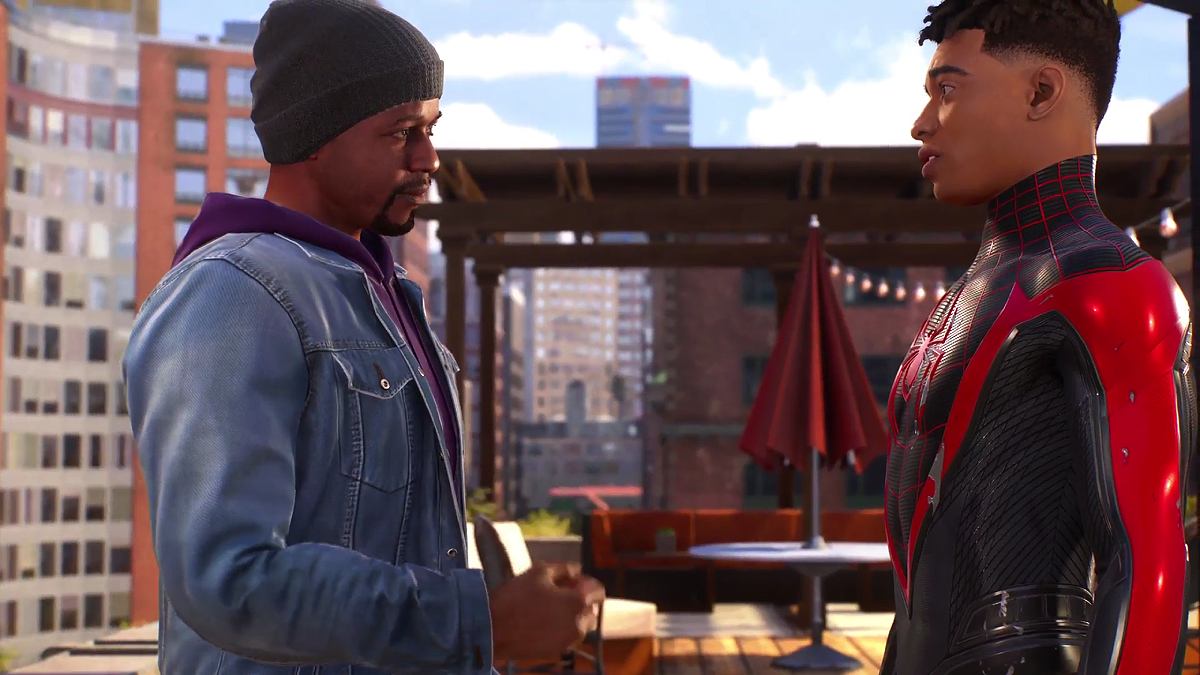
Marvel’s Spider-Man 2 isn’t Raimi-levels of sadness; you won’t see a funeral every 20 minutes, fortunately. Instead, its ingeniously and masterfully crafted script ebbs and flows maturely, dedicating itself to both the adult struggles of Peter and the uncertain future of Miles. It is what elevates Marvel’s Spider-Man 2 beyond the potential ennui that comes with a sequel to a game based on a character that has been exhaustively studied. This is perhaps its greatest accomplishment, making me care about characters that we’ve seen on screen and in comic books for over 80 years.
“Its complex characters, nightmarishly haunting villains, and immense stakes, both globally and personally, are immeasurably brilliant.”
Of course, that’s not to say that the game doesn’t feature a plethora of popcorn-devouring thrill rides. Marvel’s Spider-Man 2’s elevation of the superhero genre extends to both the action-packed set-pieces as much as it does to the human element of its costumed characters. This is largely thanks to the game’s improved cinematics that now run for far longer and feel as close to the impossibly phenomenal action seen in the recent Spider-Verse movies as you can get.
The sheer scale of Marvel’s Spider-Man 2’s action-packed set-pieces is unimaginable, a far cry from the first game’s already impressive moments. It is in the depth of the animations, the unmatched motion capture performances, and striking art design that brings the entire experience together, allowing for such creatively driven sequences to blow your mind as you watch, mouth agape. There were truly several moments within Marvel’s Spider-Man 2 where I audibly gasped, the game taking me in directions I never thought it would let alone could.
However, all of this would be nothing were the story and characters of Marvel’s Spider-Man 2 not interesting. After all, no amount of flash and spectacle can distract you from a B-tier narrative. Fortunately, this is not the case with Marvel’s Spider-Man 2, for its complex characters, nightmarishly haunting villains, and immense stakes, both globally and personally, are so immeasurably brilliant that I feel even were I able to spoil the whole game for you, I’d fail to do it justice.
“Both protagonists are equally fleshed out and provide endless entertainment, heart-wrenchingly sad moments, and enough dad jokes to fill a book.”
Marvel’s Spider-Man 2’s collection of villains is immense, far greater than the previous games combined, but it never feels diluted. Instead, the game gives a greater focus to two of its core villains, Kraven and Venom, both of whom are equal parts terrifying and electrifying to watch. Jim Pirri gives an unceasingly complex performance as Kraven, balancing the menacing with the emotional, striking fear into the hearts of all who witness him, even during the final moments.
However, it is Venom who is perhaps the most intriguing of all the game’s villains. What you have seen of him in the promotional material is just a flavor of the horrifying intensity that he brings to the game. Even as he lurks in the shadows for much of Marvel’s Spider-Man 2’s runtime, Venom proves to be a niggling fear, a parasitic reminder that nothing is safe and even in the game’s most jovial moments, darkness is always near.
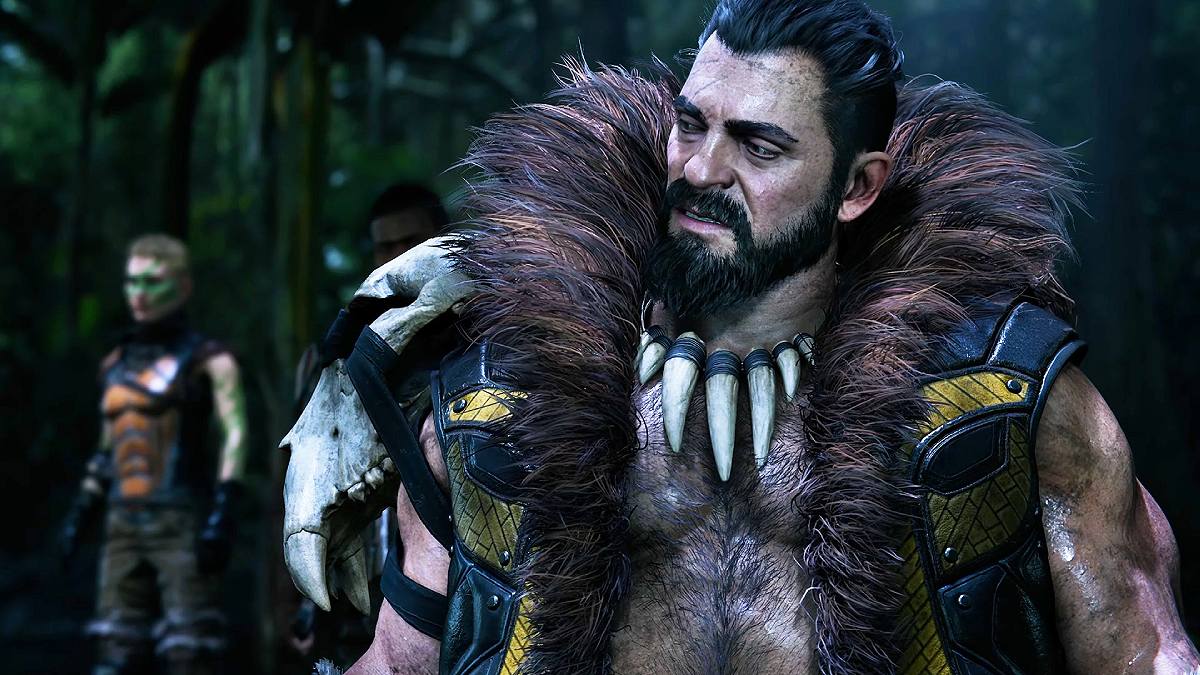
Fortunately, we have Miles and Peter to save the day, and once again, Yuri Lowenthal and Nadji Jeter give award-worthy performances. I found myself gravitating towards Miles more than Peter, not least because he seems to be given a greater emphasis, perhaps to make up for his lack of screen time comparatively, but also because of Jeter’s raw and emotionally charged performance. Of course, that’s not to say that Lowenthal doesn’t knock it out of the park, giving a truly multi-layered performance that perfectly captures both the jovial and devastatingly dark sides of his character. Nevertheless, both characters are as equally fleshed out as one another and provide endless entertainment, heart-wrenchingly sad moments, and enough dad jokes to fill a book.
“The side content is also where you’ll find some of the game’s more experimental questlines.”
When you’re not deep in the throngs of Marvel’s Spider-Man 2’s core narrative, you’ll be engaging with its side content. Typically, side content in video games is relegated to fetch quests and meaningless drivel that serves little purpose other than to exacerbate a game’s runtime and give the player meaningless XP. Fortunately, Marvel’s Spider-Man 2 veers firmly away from this, for the most part at least, and sees its side content as a way of expanding not just upon its world and rogues gallery of interesting villains but also as another means through which to flesh out its central cast of characters.
You’ll still find yourself completing arena-based challenges under a strict time limit, doing mindless movement-based missions, and collecting a hundred or so of an enjoyably themed yet ultimately pointless collectible. However, even in those cases, the writers have ensured that you’re always rewarded with meaningful narrative moments that build upon the established characters in a way the busy main story simply doesn’t have time to. It’s also a phenomenal opportunity to throw in a smattering of Spider-Man’s more beloved and even obscure villains as either throwaway cameos or key players in their own significant storylines. More so than the previous games, Spider-Man 2’s side content, big or small, feels enormously worthwhile.
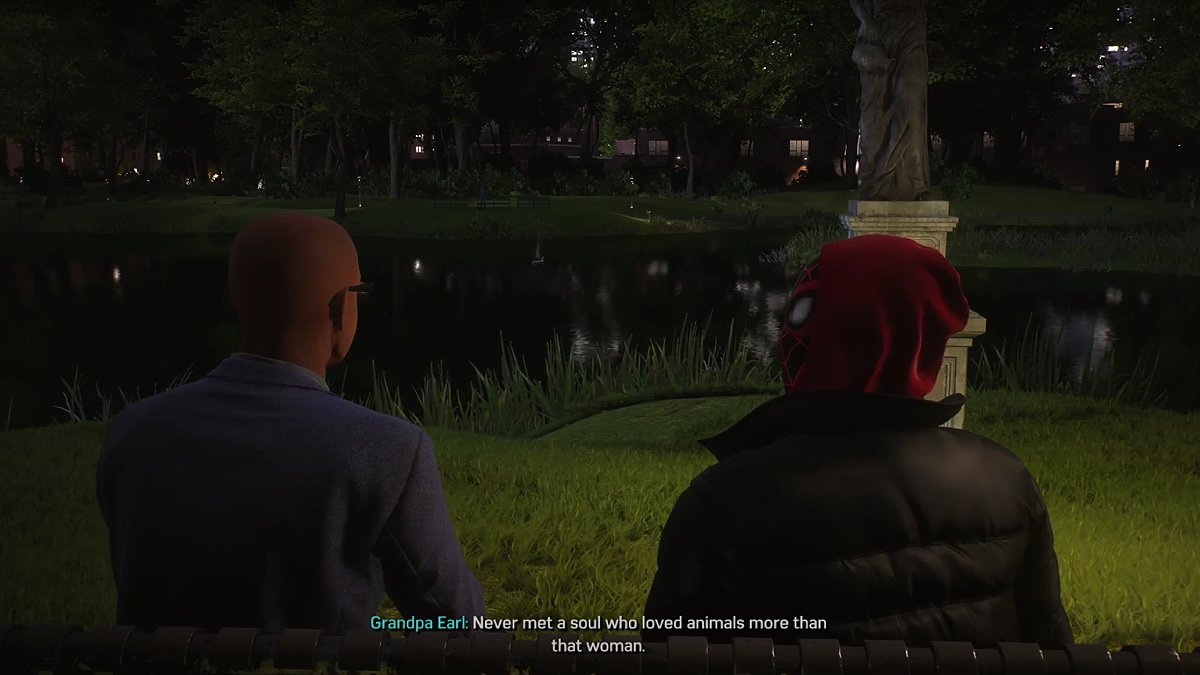
The side content is also where you’ll find some of the game’s more experimental questlines, such as one that involves you getting trapped in a VR-esque experience or another that has you track down missing people that may have been gone far longer than you first assume. These joyful escapades provide a moment’s respite from the main story but never detract from it completely. The game will frequently give you opportunities in which you can check on the city and see who needs saving. There’s no ludonarrative dissonance here, with every action you take feeling appropriate and even necessary at times.
“Diversity, fortunately, shines in almost every aspect of Marvel’s Spider-Man 2.”
But by far the best side missions are those that are exclusive to either Peter or Miles. Each character has a series of specific side quests that only they can complete, giving them an opportunity to shine independently of their fellow Spider-Man. Without spoiling any of them, the two main side quests that each of these characters has are perhaps some of the best stories in the game, a considerable effort, especially when compared to the game’s already superb main questline.
They’re not especially lengthy, only taking up two or three missions respectively, but they offer up an enormous amount of depth and character development that feels as satisfying as it does rewarding to experience. They also allow for some more ambitious storytelling, delving deeper into social and political topics in the case of Mile’s questline and more horror-filled supervillain antics in Peter’s. These quests are a shining example of the dedication Insomniac Games have not only to building upon this incredible world and lore but also to ensuring it feels as diverse and mature as possible.
That diversity shines in almost every aspect of Marvel’s Spider-Man 2. Characters of all sexual orientations are treated as equals; Hailey, a deaf character, plays a prominent role and interacts with those around her using sign language. There is even an extended questline revolving around cultural appropriation and the celebration of black musicians and actors. It’s a refreshing change, especially considering how heteronormative and white Spider-Man has been over the past few decades.
“A lot of the side content is visible from great distances, drawing your attention as you swing or glide from point to point.”
Of course, one of the highlighted features in much of Marvel’s Spider-Man 2 was how the side content has been more seamlessly integrated into the open world than ever before. Gone, supposedly, are the days of tracking objective markers and swinging toward the golden arrow. Instead, side content is visible while exploring: tendrils shooting up into the sky, Kraven’s vultures circling a skyscraper, a faint purple glow around a rooftop, and many, many more. In theory, this approach heightens the sense of discovery that comes with open-world titles while working harmoniously with the game’s perpetually enjoyable traversal mechanics.
In practice, it works for the most part, with a lot of the side content visible from great distances, drawing your attention as you swing or glide from point to point. There were certainly countless times in which I found myself discovering a crate full of resources glowing in the distance or wanting to check out what the billowing cloud of smoke spewing from the top of an alleyway held in store for me. Not all visual clues are made equal, however, and some present themselves merely as glowing orbs or ostensibly giant quest markers that linger until they disappear after some time.
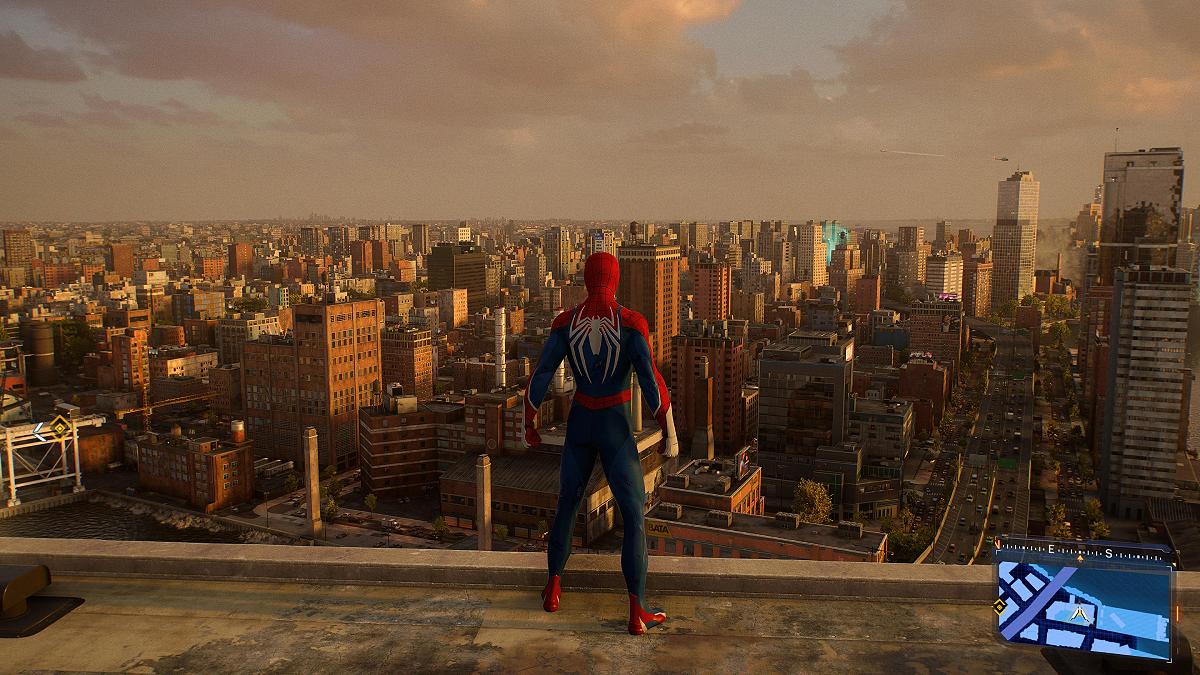
Additionally, some questlines littered my map with map markers for me to track from the get-go instead of letting me stumble across them naturally. It was inconsistent with which missions did and did not present a map marker to follow, but in reality, it didn’t particularly bother me. After all, a significant amount of side content was left uncompleted by the end of the game due to its seamless integration in the game world, as the traversal in Marvel’s Spider-Man 2 doesn’t necessarily facilitate or encourage the exploration of areas beyond where you need to go for the narrative. In essence, I missed out on some side content because I simply never went to where I was supposed to stumble across it.
“The expanded visual identity of Marvel’s Spider-Man 2’s rendition of New York allows for missions to take place in more ambitious and dynamic environments.”
Marvel’s Spider-Man 2’s seamless integration of side content would be pointless were it not for its more diverse and expansive open world. The sheer scale of New York is as impressive as it is immersive, a dense concrete jungle expanded to include a far greater variety of locales and sights. No longer are you confined to the high-rise apartment buildings and skyscrapers of Manhattan. Instead, you’ll find yourself gliding across sleepy suburbs, swinging between artsy highstreets and local coffee shops before exploding out across the East River.
It’s a far more varied open world than its predecessors, but perhaps not necessarily a better one. Sure, the expanded visual identity of Marvel’s Spider-Man 2’s rendition of New York not only allows for a more comprehensive virtual tourism experience but also allows for missions to take place in more ambitious and dynamic environments from across New York’s many diverse boroughs. However, it also loses some of its clarity as a result, becoming an almost gargantuanly overwhelming place to explore, one that you very rarely feel at home in.
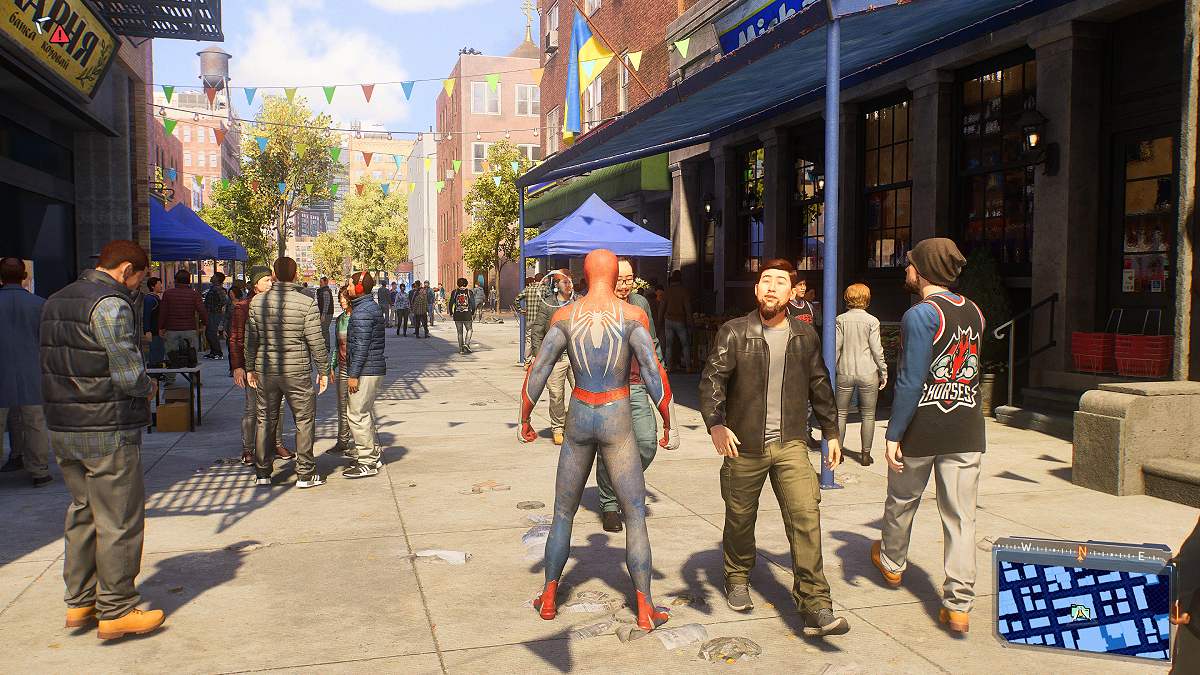
In the first game, I distinctly remember being able to identify exactly where I was at any given time without consulting the map. This was, in large part, due to the game’s more concise open world, one whose skyscrapers became as familiar to me as the game’s core cast of expertly written characters. However, Marvel’s Spider-Man 2 sacrifices this feeling somewhat in its attempt to diversify its world. Admittedly, it’s a fair trade-off, one that sees you rely more on your map in exchange for a reduced sense of repetition and a greater sense of visual distinctiveness.
“Traversal in Marvel’s Spider-Man 2 remains a joyous experience and a greatly appreciated holdover.”
This significant expansion of the open world also benefits traversal, which similarly sees an impressive refinement in both its web swinging and the inclusion of the Web Glider. This nifty device serves a practical purpose in that it allows for traversal over the East River and other locations where web swinging isn’t possible. However, its greatest gift to the game lies in its ability to smooth out the kinks in Marvel’s Spider-Man 2’s near-flawless swinging mechanics. Should you falter or find yourself losing momentum, deploying the glider can help keep you in the flow, ensuring that traversal rarely feels perfunctory.
Not much can be said about the web swinging, as it mostly feels the same from both of the prior games. Nevertheless, it continues to be one of the most satisfying and immersive ways to traverse a world in video games. Unsurprisingly, from the moment you launch yourself into the bustling streets of New York, swinging feels as effortless as it does fulfilling. It maintains the same sense of awe and wonder as it did in the previous games, eliciting equal parts glee and grandeur from start to finish.
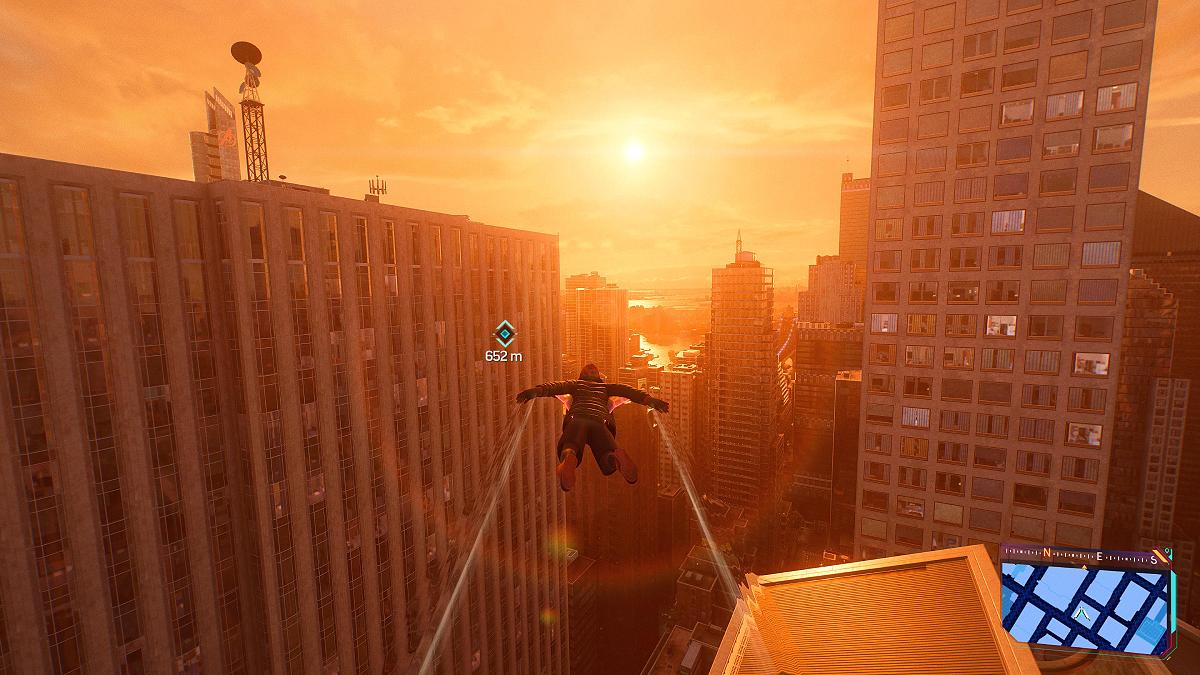
Alas, it also never feels particularly new. While the additional boroughs help differentiate the open world from the previous games, swinging through it, no matter how exciting, never quite captures that same novelty the first game gave us. You do unequivocally feel like Spider-Man, but it feels ever so slightly less groundbreaking, even if it’s just as exciting. Nonetheless, traversal in Marvel’s Spider-Man 2 remains a joyous experience and a greatly appreciated holdover.
“Marvel’s Spider-Man 2’s faster load times allow for some genuinely mesmerizing set pieces that see the Spider-Men pull off spectacular feats.”
Traversing the open world also feels excellent, thanks to the significant visual overhaul that this sequel has received. I won’t pretend as if the original game wasn’t a visual powerhouse, a demonstrably gorgeous game that left fans incredulous due to its beguiling density of detail and timeless art style. However, when compared to this latest title, it feels positively last gen, owing mainly to the sequel’s enhancements in both facial animations and dedication to detail.
The game’s visuals shine brightest in some of its quieter moments, such as the way light reflects through smoke trailing from a rooftop vent, the graffiti sprawled across towering high-rise apartments that cast deep shadows across chainlink fenced basketball courts covered in litter, the peeling paint of a suburban home, a sunset viewed from the top of the empire state building slowly casting a rich pinkish hue across the entire city, its majesty reflected by the skyscrapers. All of this is best witnessed for yourself, a beauty best seen in action unfolding before your very eyes and one hardly done justice in a fleeting image online.
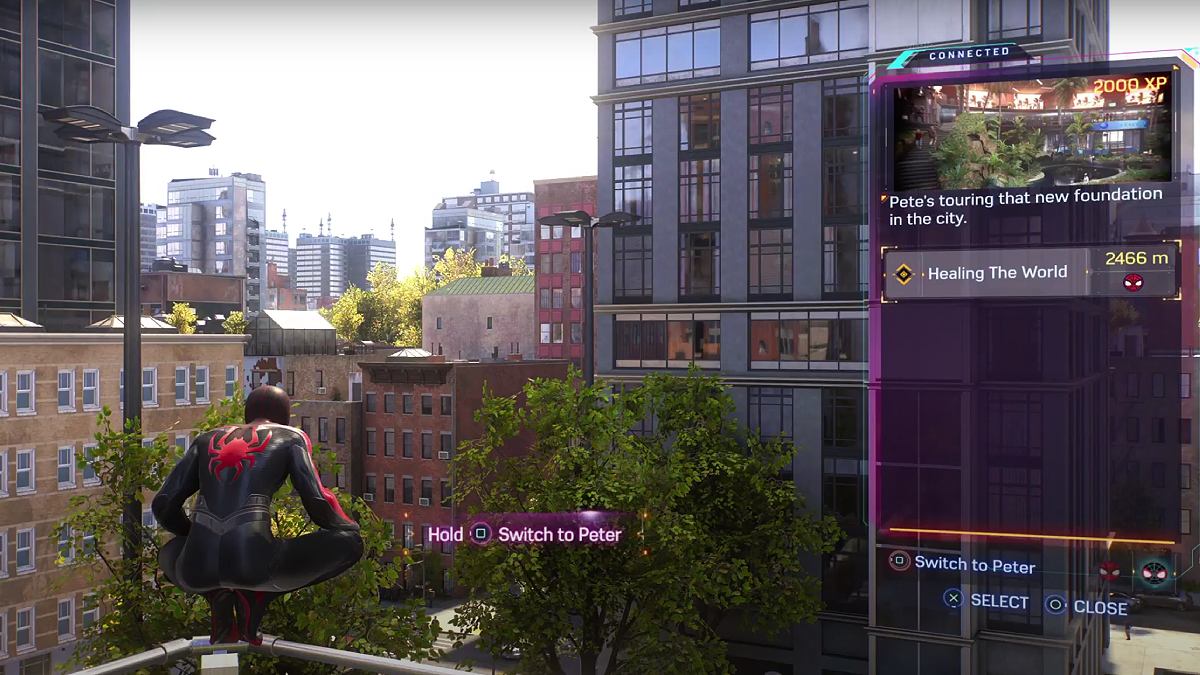
There are also plenty of instances in Marvel’s Spider-Man 2 where it is incredibly evident that this game could only ever have run on the PlayStation 5. The aforementioned dramatically enhanced cutscenes are one prime example, but its faster load times allow for some genuinely mesmerizing set pieces that see the Spider-Men pull off spectacular feats. I won’t spoil any of these dazzling moments, but rest assured that the experience you’re getting is very much one deserving of the Next Gen label. It is one that allows for the seamless and instant transition between Miles and Peter at the press of a button, a more dynamic and expansive world, and, of course, jaw-dropping visuals that continue the series’ tradition of staggeringly stunning vistas.
“The impressive collection of abilities is a lot of fun to use and helps you buy into the power fantasy the game is eager for you to enjoy.”
Combat is significantly elevated by the improved visuals. This is largely felt when it comes to overall animation quality and the cinematic camera techniques employed to heighten the impact of certain attacks. You’ll feel an exhilarating rush when the camera pulls back as you launch into one of your special abilities before crashing back in for the final punch. The action-packed cinematography baked into the gameplay experience is frenetically bombastic, an unceasingly awe-inspiring technical marvel that elevates a simple punch into an explosive impact.
The visual side of combat helps bring to life Marvel’s Spider-Man 2’s slew of new abilities for both Miles and Peter. These evolve over the course of the game, becoming increasingly more powerful and visually striking, not just through upgrades but also narrative-driven consequences. The impressive collection of abilities is a lot of fun to use and helps you buy into the power fantasy the game is eager for you to enjoy.
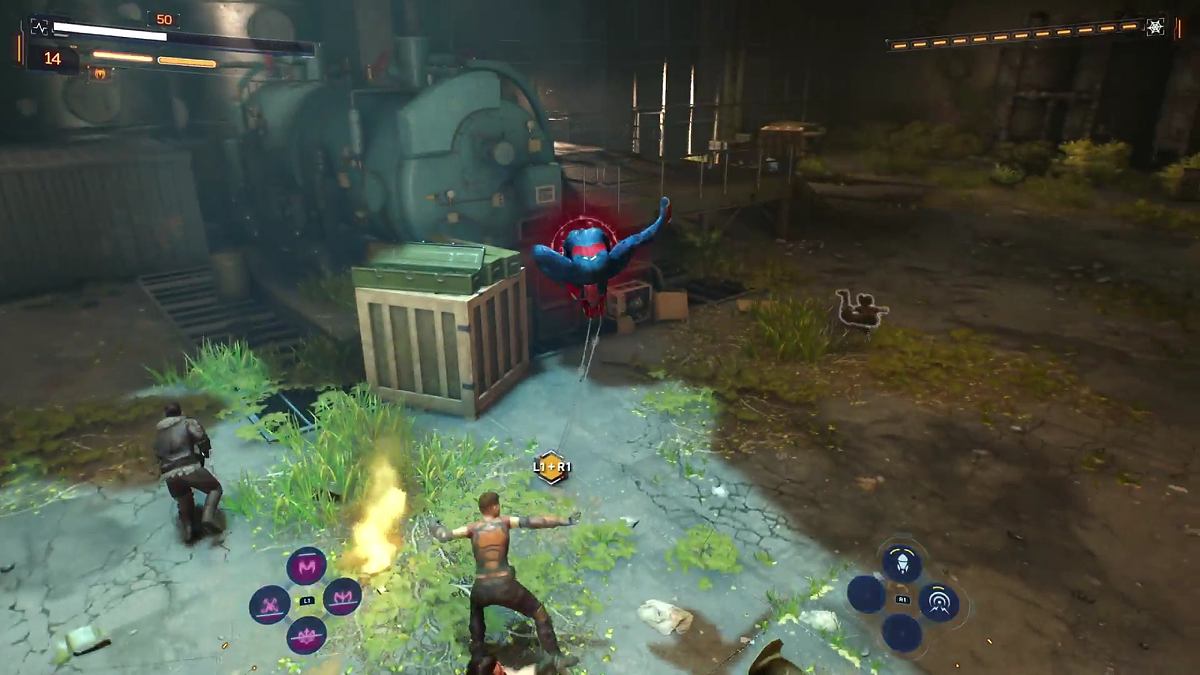
Unfortunately for those hoping Marvel’s Spider-Man 2 would dramatically alter the combat in some way, there’s little to no change here beyond those abilities. You’ll gain skill points throughout your playthrough, which can be used to improve upon these abilities in subtle ways or help you expand your traversal techniques. Additionally, you can increase your health, damage, and focus meters, as well as upgrade your gadgets incrementally through stat buffs and percentage increases. However, all of this can largely be ignored in favor of spending your hard-earned resources on new suits. That’s not to say that combat is in any way unenjoyable. Rather, it remains consistently fun despite its lack of evolution, thanks to its already incredibly impressive foundation and the various refinements it received over the past two games.
“I felt the absence of any memorable tracks throughout most of Marvel’s Spider-Man 2.“
One of Marvel’s Spider-Man 2’s few issues is its soundtrack. While many may not cite the original game’s soundtrack as genre-defining, it certainly gave the game and character a distinct identity that helped not only differentiate it from Raimi or the MCU’s version of the nerdy wallcrawler but also reinforced the thrills associated with stepping into his shoes. Unfortunately, save for a handful of tracks, Marvel’s Spider-Man 2’s soundtrack falters, failing to maintain its tradition of individuality and originality.
That’s not to say it’s all terrible, far from it. The musical cues for Kraven and his goons are truly haunting, his core theme song instilling a deeply unsettling sense of tension and fear whenever it creeps up on you. There are also some emotionally resonant songs in the latter half of the game that play during integral moments and boss fights, which help elevate any scene they play during. Furthermore, Marvel’s Spider-Man 2 incorporates a few licensed tracks, including Cigarette Daydreams and Seabird, a song choice so inspired and poignantly beautiful I can only imagine it will gain significant popularity once the game releases.
The soundtrack is hardly an issue worth harping on about, especially considering the gravity of Marvel’s Spider-Man 2’s main flaw, yet I felt the absence of any memorable tracks throughout most of my experience. I can’t imagine many players will be as bothered as I was, and even fewer will pick up on the nuances it can afford a title. Nevertheless, it saddens me to say that outside of the Kraven theme, I’ll likely never listen to the soundtrack again.
“I’m certain that years from now, I will remember the rest of the game far more fondly and simply forget about its technical shortcomings.”
Unfortunately, I suspect Marvel’s Spider-Man 2’s other issue will cause a far greater uproar amongst fans: the bugs. During my time with the game, I suffered from four hard crashes, one of which occurred during the final boss fight, and a number of visual bugs, including floating phones and characters stuck in geometry. There were also quests that couldn’t be completed as the right NPC hadn’t spawned yet, subtitles rarely matched up with what was being said, and I even encountered a bug that saw me turn into a white cube that wouldn’t change until I completely restarted the game.
Initially, the bugs felt passable, especially when compared to recent releases such as Starfield. However, they became grating over time, especially the constant crashing and distracting visual glitches. One scene in which Harry, MJ, and Peter were supposed to be having a meaningful conversation saw Harry’s entire head and neck float into the air as if Doc Ock himself had escaped the Raft and decapitated the poor guy in front of his friends.
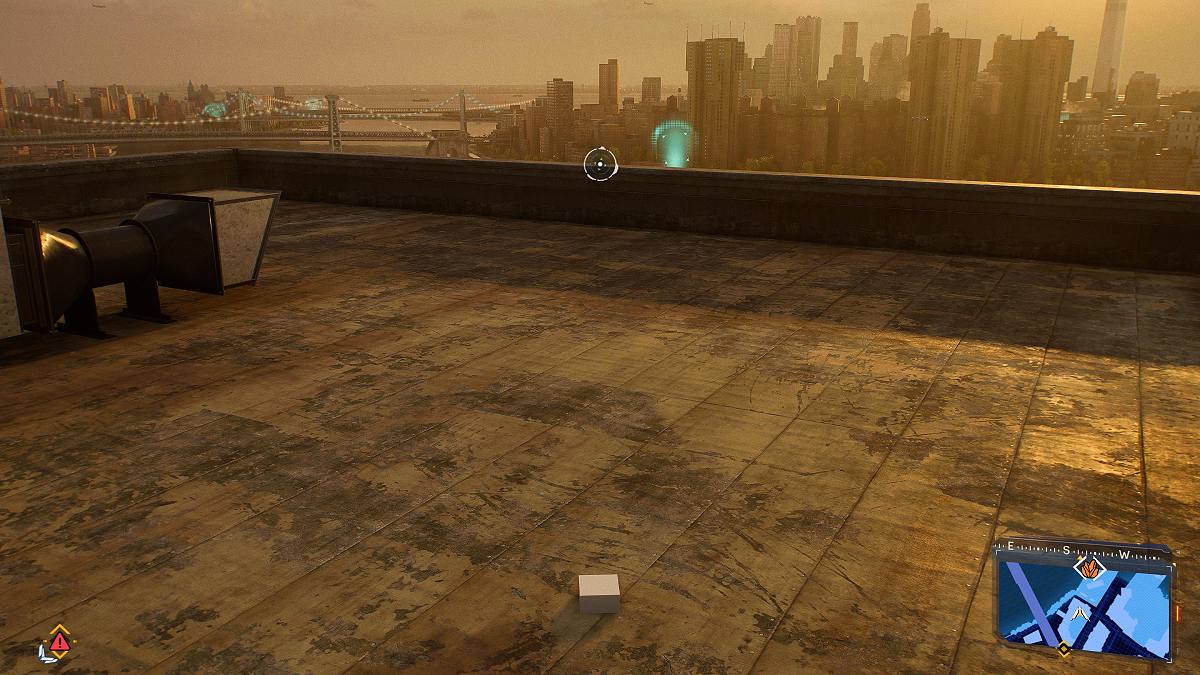
Of course, I was playing an early build of the game, one that will undoubtedly be patched prior to and after the official release date. However, I felt it prudent to mention these glitches as some fans may be put off by a poor technical state, no matter how good the rest of the game is. Personally, I grew accustomed to it eventually, and I’m certain that years from now, I will remember the rest of the game far more fondly and simply forget about its technical shortcomings. Well, aside from that cube glitch, that is forever etched into my brain.
“Marvel’s Spider-Man 2 is one of the greatest PlayStation exclusives, but also one of the best games ever made.”
Despite these technical issues, Marvel’s Spider-Man 2 remains a remarkable achievement, triumphant in practically every aspect, weaving a masterfully crafted story with immense stakes through a refined gameplay model that continues to be effortless fun capable of grabbing your attention across its lengthy runtime. It is as much a crowd-pleaser as it is a richly detailed exploration of social injustice, loss, and love, and that is perhaps why I love it so much.
Rarely does a game hold my attention for this long, begging to be played during every waking moment and lingering lovingly in your dreams, and yet Marvel’s Spider-Man 2 has very much stayed with me since the final credits rolled. I suspect it will for a long time to come. This is a love letter not simply to its source material but also to the fans who have dedicated themselves to this character, his companions, and his worst enemies. It so perfectly encapsulates everything that makes Spider-Man great, from the minute details of the streets of New York City to the complex character arcs that the game’s central cast embark upon.
Marvel’s Spider-Man 2 sets out to be as rewarding as possible, rewarding those who have been with the series since the beginning, rewarding those who complete every last side quest, and rewarding those who invest in the emotional stakes of its narrative. It is for this reason, and the many others I’ve listed in this overly-long review, that I feel confident in saying that not only is Marvel’s Spider-Man 2 one of the greatest PlayStation exclusives, but also one of the best games ever made.
*Disclaimer: Reviewed on PS5; code was provided by Sony.




